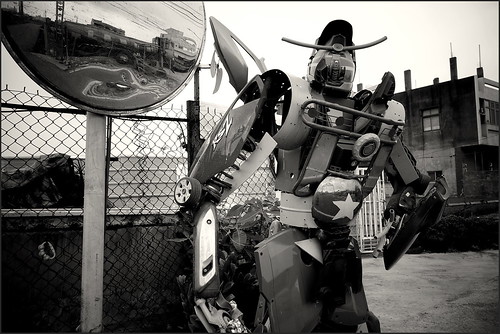
Via FreeIO.org comes news of a new open hardware robot: the official Arduino Robot. The Arduino Robot will be on sale at the Maker Faire in San Mateo immediately but will be generally available for online orders starting in July. The robot has two ATmega32u4 microprocessors. It has a standard differential drive arrangement with two DC motors but apparently no encoders. Sensors include a compass and five bottom-facing IR sensors for line following. There are several push buttons and potentiometers for input and, for output, a speaker and LCD screen. Multiple prototyping areas are available for adding your own sensors and actuators. The MAKE blog ran an interesting account of how the designers of this robot went from knowing nothing about robotics to designing this beginner robot for kids in just a few years. The most important aspect of the Arduino Robot is that, like other Arduino hardware, it's under a free license:
As always with Arduino, every element of the platform – hardware, software and documentation – is freely available and open-source. This means you can learn exactly how it's made and use its design as the starting point for your own robots.
There's already a lot of technical info available including the EAGLE CAD files for both boards, and documentation on the new Robot library that's included with the Arduino IDE 1.0.5 and later. We look forward to hearing more about this robot or doing a review if a one should end finding it's way to the Robots.net testing lab. For more about other open source robot platforms, see the recent FreeIO article, The State of Free Hardware for Robotics.
Read More






